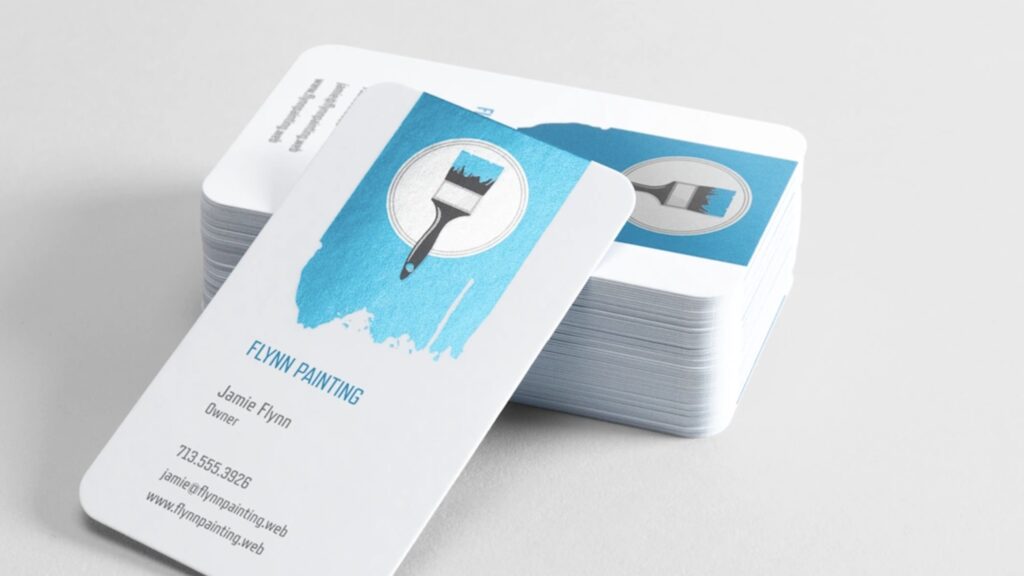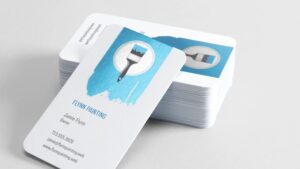Creating a business card involves a detailed process that integrates design, printing, and finishing techniques to produce a professional and appealing final product. Here’s an overview of the entire process, from conception to the finished business card.
Design
- Design Setup: The design process begins with setting up your business card in a design software, such as Adobe Illustrator. You need to consider the dimensions of the card, which commonly are 3.5″ x 2″ in the U.S. Setting up the document correctly is crucial, including ensuring it has the right bleed, trim, and safety margins. Bleed is especially important as it prevents white edges from appearing after the card is cut.
- Text and Graphics: When designing, keep text sizes readable, usually not going below 6pt for the smallest text. Choosing the right fonts and colors is critical, ensuring high contrast and legibility. For graphics, using high-quality images or vectors is important to avoid pixelation, with all artwork prepared at 300ppi for sharp printing.
- QR Codes and Contact Details: Modern business cards often feature QR codes to direct potential clients to your website or online portfolio. It’s a useful tool for enhancing interaction with your brand but should be designed to complement the overall aesthetics of the card. Ensure all contact details are accurate and well-placed, avoiding clutter.
- Finalizing Design: Before sending the design to print, convert all text to outlines to prevent font substitution issues. Save the final design as a high-quality PDF, with fonts embedded, to ensure it prints exactly as intended.
Printing
- Choosing Material and Print Method: The material of your business card significantly affects its feel and quality. Options vary from matte, glossy, to textured finishes, each offering a different look and feel. The weight of the paper (measured in GSM) also impacts the quality, with higher GSM indicating a thicker card. Most business cards are printed using digital or offset printing methods, depending on the quantity and quality required.
- Printing Process: Once the design is finalized, it’s sent to a digital color press for printing. High-quality printers ensure that the colors are vibrant and the details sharp. After printing, the sheets of business cards are cut to size using precision cutting machines.
Finishing
- Cutting and Trimming: After printing, the business cards are cut and trimmed to their final size. This step is crucial for achieving clean edges and ensuring that the cards fit standard business card holders.
- Additional Finishing Options: Several finishing options can add a unique touch to your business cards, such as lamination, UV coating, or embossing. These finishes can provide a tactile feel, protect the card from wear and tear, and enhance the visual appeal.
In conclusion, creating a business card is an intricate process that requires careful consideration at each step. From designing with the right tools and specifications to choosing the appropriate printing and finishing techniques, each element plays a vital role in producing a business card that effectively represents your brand and stands out to potential clients.

